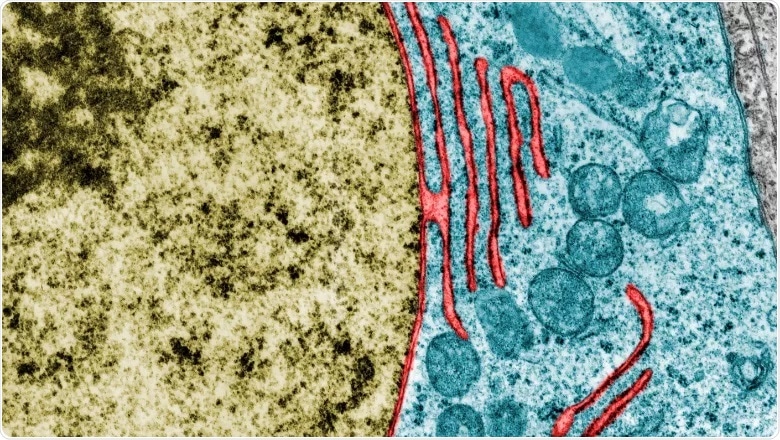Reviewed by Danielle Ellis, B.Sc.Dec 9 2021
The nucleus present inside the cell is surrounded by the nuclear envelope—two layers of phospholipid membrane that obstructs the nucleus from mixing with other parts of the cell—safeguarding the cell’s DNA from outside damage.

Image Credit: King’s College London.
But the nuclear envelope can be ruptured and broken while undergoing strain. This could happen when the cytoskeleton (a network of fibers functioning as a scaffold and providing a stable structure) applies pressure on the nucleus.
The current research headed by Dr Monica Agromayor of the School of Immunology & Microbial Sciences details how pressure is alleviated from the cytoskeleton.
Uncovering the mechanisms that underpin rupture repair is a fundamental question in cell biology, and a better understanding of this process has broad implications for human diseases such as cancer, cardiovascular disease, or autoimmunity.”
Dr Monica Agromayor, School of Immunology & Microbial Sciences, King’s College London
The study reveals that a group of proteins called the ESCRT machinery is in charge of resealing the nuclear envelope.
The research concentrates on a protein linked to ESCRT, called BROX. It was noted that BROX is the major protein involved in relieving pressure from the cytoskeleton, thus enabling the resealing of the nuclear envelope. The study was published in the Developmental Cell journal.
The ESCRT machinery binds BROX to the ruptured site on the envelope. This enables BROX to attach to the LINC complex—a group of proteins that link the nuclear envelope to the cytoskeleton, thereby enabling it to exert excessive pressure on the nuclear envelope.
Attaching BROX leads to the removal of LINC from the site of rupture. This decreases the stress applied by the cytoskeleton, enabling the nuclear envelope to repair itself.
The observations promote the increasing evidence that the nucleus is an organelle that interacts with its cellular environment, rather than being a protective sheath for DNA.
The observations can also impact cancer studies, as a damaged nuclear envelope is linked to cancer and cardiovascular diseases. For instance, BROX gene mutations were seen in familial nonmedullary thyroid cancer. Further studies can help identify if BROX mutations contribute to tumors.
Dr Agromayor also commented on the group that carried out the study.
This multidisciplinary work shows the importance of collaborative research. Besides the close collaboration with Juan Martin-Serrano, we were fortunate to join forces with the laboratory of Sergi Garcia Manyes from the Physics Department at King’s.”
Dr Monica Agromayor, School of Immunology & Microbial Sciences, King’s College London
Source:
Journal reference:
Wallis, S. S., et al. (2021) The ESCRT machinery counteracts Nesprin-2G-mediated mechanical forces during nuclear envelope repair. Developmental Cell. doi.org/10.1016/j.devcel.2021.10.022.